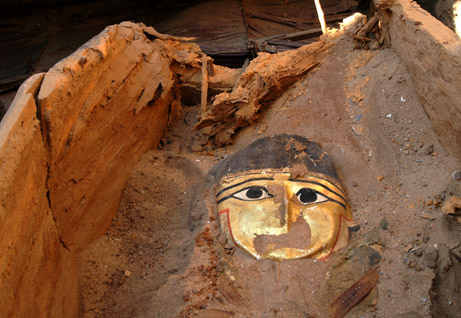 Washington, April 14 : Archaeologists working in an Egyptian oasis have found a necropolis containing dozens of brightly painted mummies dating back as far as 4,000 years.
Washington, April 14 : Archaeologists working in an Egyptian oasis have found a necropolis containing dozens of brightly painted mummies dating back as far as 4,000 years.
The necropolis was uncovered near the Ilahun pyramid in Fayoum oasis south of Cairo.
According to a report in Middle East Online, the linen-wrapped mummies are painted in the still-bright traditional ancient Egyptian colours of turquoise, terracotta and gold.
“The mission found dozens of mummies in 53 rock-hewn tombs dating to the Middle Kingdom from 2061-1786 BC,” said Zahi Hawass, Egypt’s antiquities chief.